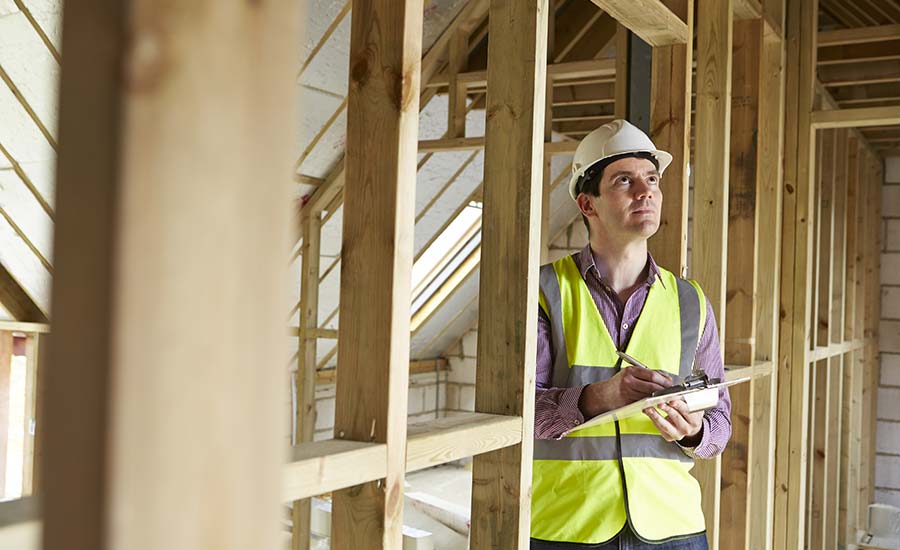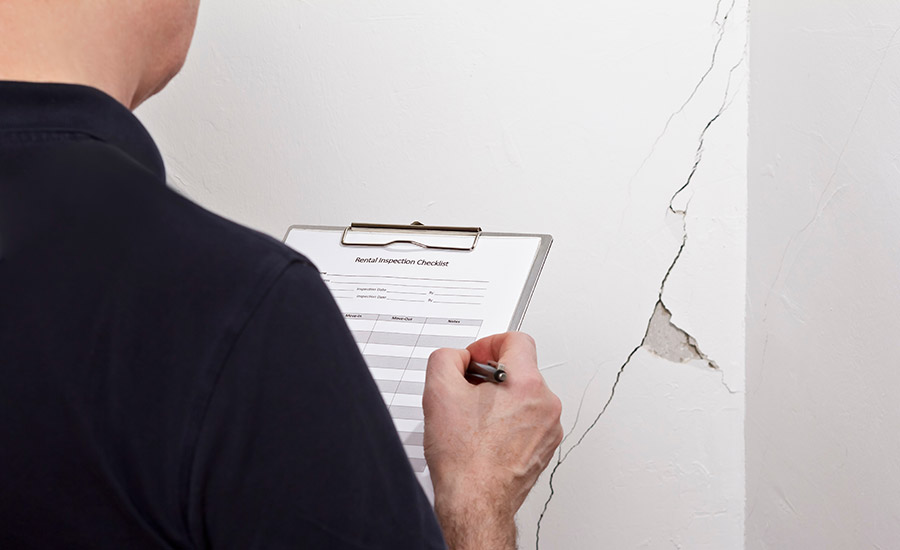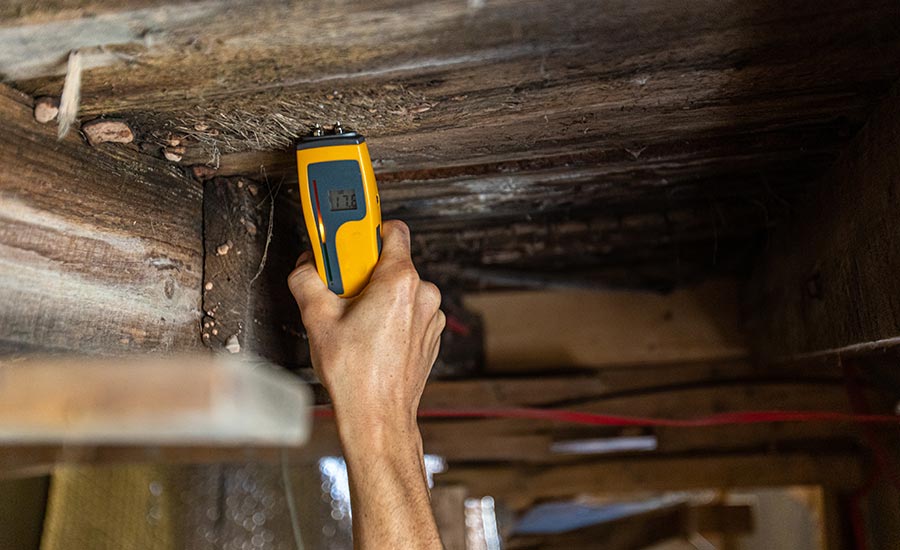
Whether you’re inspecting a home for a new buyer or performing a follow-up inspection after a building has been treated from termites, a termite report inspection checklist ensures that every crack and crevice is checked for signs of infestation.
We’ll share what a termite report should include and provide a full termite inspection checklist you can refer to during your on-site evaluation.
Plus, we’ll introduce you to doForms — a mobile forms solution that allows you to create, modify, save and send documents whether you’re on-site or on the road, including termite reports, work orders, invoices and more.
Table of Contents
Create a custom, digital termite report.
Try doForms for free!
What Is A Termite Report?
A termite report is a document that provides details about the presence or absence of termites in a property, following a physical inspection.
If the findings reveal that termites are present, the report will outline the evidence of the infestation and damages caused by these unwanted guests.
A termite report is most commonly used by a termite inspector or a home inspector who has a pest control license.
Termite reports are typically performed when a homeowner:
- Buys a new home
- Requests an annual home inspection
- Conducts termite treatment and needs a follow-up inspection
- Performs major home renovations
What Does A Termite Inspection Report Include?
A termite report includes the results of a termite inspection across the property. The inspection typically focuses on areas that are prone to termite activity, such as wooden structures, crawl spaces, basements and other concealed or wooden spaces.
Here’s what a termite report should include:
- Contact information: Include the inspector’s name, the names of the property owner and buyer, the type of property (whether residential or commercial), the address of the property being inspected and the inspection date.
- Findings: State any evidence of termite activity that was found, such as live termites, termite droppings, swollen floors, maze-like patterns on floorboards, mud tubes (pathways that are located around termite nests) and crumbling or damaged wood. Also include any areas that were inaccessible or obstructed during the inspection.
- Type of termite: Determine the type of termite found if termites are present, such as drywood termites, subterranean termites, dampwood termites, formosan termites or conehead termites.
- Extent of infestation: Assess the extent of the termite infestation. Determine whether it is isolated in a specific area or has spread throughout the property.
- Recommendations: List the best course of action required to remove pests and/or repair the termite damage. This might include professional termite treatment, regular termite inspections and prevention methods to keep future termite infestations at bay (reducing moisture in and around the property and improving ventilation — for example).
- Photos: Include photos or sketches of the property to visually display where termite activity was found or where termite damage is present.
- Signature: Add the inspector’s signature to validate the report’s accuracy and completion and state that the inspection was conducted in accordance with professional standards and local regulations. The inspector’s signature typically appears at the end of the report, along with their printed name and license number.

A termite report includes the findings of a termite inspection, along with recommendations for termite treatment
Termite Inspection Checklist
A termite inspection checklist allows termite and home inspectors to properly assess and document signs of termite infestations in a property.
This checklist is typically divided by property areas, including the interior, exterior, attic, basement and garage of a home.
1. Interior
- Check for signs of wood damage, such as buckling or blistered wood, dipping ceilings and swollen ceilings and floors. For carpeted floors, look for areas where the carpet may be bulging.
- Look for mud tubes, frass (termite droppings that resemble tiny, wood-colored pellets) and discarded wings.
- Inspect window frames, door frames and door sills for termite activity.
- Look for ceiling bubbles or discolorations and stains that are similar to water damage. A small inspection mirror can help you view hard-to-see areas.
2. Exterior
- Examine the foundation of the property and look for mud tubes.
- Inspect all wooden structures, such as decks, fences, gazebos and posts. Use a screwdriver to check for hollow sounds.
- Check rotten or dead trees for signs of early termite activity. Dead trees have softer wood, providing termites with easy access to cellulose — their primary source of food.
- Check mulch and landscaping for signs of wood damage.
- Make sure the gutters are clean and properly directing water away from the property to prevent moisture buildup.
- Check the roof for any signs of decay or water damage.
- Check if wooden porch steps are resting on the ground. Termites live in the soil and can easily find their way to wooden porch steps when they are in direct contact with the soil.
- Check for piles of wood scattered near the house, which can attract termites.
3. Attic
- Look for mud tubes, frass and discarded wings.
- Inspect beams, rafters and sheathing for any signs of wood damage. Use a screwdriver to check for hollow sounds.
- Check wires and pipes for signs of mud tubes.
- Inspect wooden furniture and stored items for termite activity, as they can be food sources for termites.
4. Basement
- Inspect joists, posts and beams for signs of wood damage. Use a screwdriver to check for hollow sounds.
- Check the foundation of the property, as termites can often enter a property through the cracks of the foundation.
- Scan drywalls and panels using a thermal imaging camera — a tool that detects temperature variations caused by termites.
- Inspect cardboard boxes, wooden furniture and stored items for termite activity, as they can be food sources for termites.
- Inspect the basement’s plumbing, as termites are attracted to moisture.
5. Bathroom
- Check if there are any leaks or signs of water damage under the sink.
- Inspect pipes and faucets for termite activity, including both inside the home and outside.
- Inspect the toilet, bathtub or shower and any built-in cabinets for signs of termite activity.
- Inspect the laundry room for signs of termite activity.
- Inspect the sewer and septic lines for signs of termite activity.
6. Garage
- Check the wooden parts of the garage door and frame for any signs of termite damage.
- Inspect shelves and storage boxes, as termites can also infest cardboard and books.
- Check workbenches and cabinets for signs of wood damage.

A termite report includes the findings of a termite inspection, along with recommendations for termite treatment
Digitize Your Termite Reports & Inspection Checklists With doForms
As a certified inspector, you understand the importance of thoroughly checking every area and reporting everything you find, as overlooking even the smallest detail can compromise the safety and structural integrity of the property.
And while traditional, paper checklists can be unorganized and messy and can get easily misplaced, doForms is a mobile forms solution that is built to collect data, create reports and manage workflows from any device, so you can keep all of your documents in one safe, centralized location.
With this paperless approach, you can build your own custom mobile reports and checklists or select from our extensive library of templates.
Thanks to 30+ drag-and-drop features, you can quickly create comprehensive checklists and reports, fill them out, save them and send them to homeowners, mortgage lenders and others.
You can also attach photos or videos of the termite activity with the automatic capture feature, then edit, save and send your documents while you’re conducting an inspection at the property, back at the office or on the go.
The best part? You can use the mobile forms app with or without a WiFi connection — so you can work even in the most remote work locations.
On top of termite reports and inspection checklists, doForms allows you to:
- Manage employee schedules, time logs, performance, payroll and more
- Build comprehensive property condition reports, electrical inspection checklists, FHA inspection checklists, roofing inspection reports, HVAC maintenance inspection checklists and plumbing inspection checklists
- Create near miss and incident reports
- Create safety inspection and safety audit checklists
- Protect your client’s sensitive information with HIPAA compliance and multi-factor authentication, ensuring data privacy and safety
From creating custom or templated forms to running reports and dispatching work orders, you can enjoy unrestricted access to all doForms features for an entire month, with our free trial offer.
Build a digital termite report and inspection checklist with doForms.
Start your free trial!
Wrapping Up On Termite Reports & Inspection Checklists
Termite reports and inspection checklists play a key role in ensuring the safety and maintaining the structural health of a property, whether commercial or residential.
While paper checklists can be messy, costly and get easily misplaced, the doForms mobile forms solution provides you with a modern alternative that offers cost savings, streamlined workflows and better organization.
With doForms, you can digitize your termite reports and inspection checklists, thenedit, save and send documents from any device or location, allowing you to boost efficiency and prevent your documents from getting lost.
The capabilities and features that doForms offers are nearly endless — from electronic signature capture to drag and drop features, a secure environment for storage and more.
Ditch your paper checklists and switch to doForms!




